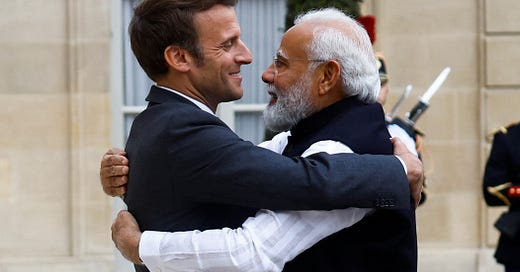India Won’t Replace China Economically, but Westerners See India as an Alternative for the Future.
Everyone now wants to be in Narendra Modi's good books.
Narendra Modi is now the one that everyone is rushing to receive in Europe. The Indian Prime Minister was the first foreign head of state to be received by Emmanuel Macron, the French president, after his re-election for a second term as head of France in April 2022. Shortly before, the German Chancellor, Olaf Scholz, had welcomed his “superpartner”, an…
Keep reading with a 7-day free trial
Subscribe to Sylvain Saurel’s Newsletter to keep reading this post and get 7 days of free access to the full post archives.




